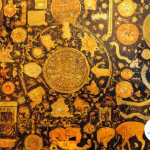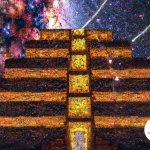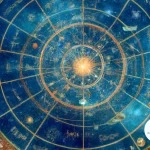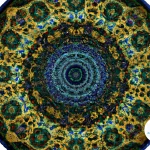Astrology has long been a fascinating and perplexing subject that has captured the interest of people from various cultures around the world. The beliefs and practices surrounding astrology have evolved over time, resulting in a wide array of cultural variations. From ancient Greece to modern Western society, from Vedic astrology in India to Japanese astrology, and from Mesoamerican astrology to Native American traditions, astrology has taken on unique characteristics in different parts of the world. Regional variations in astrology can be seen in the Middle East, South America, and Southeast Asia. In addition to these traditional practices, modern adaptations and fusions have emerged, such as New Age astrology and its influence on popular culture, fashion, and art. In this article, we will delve into the intriguing world of astrology and explore the rich cultural variations in its beliefs and practices.
Astrology in Western Culture
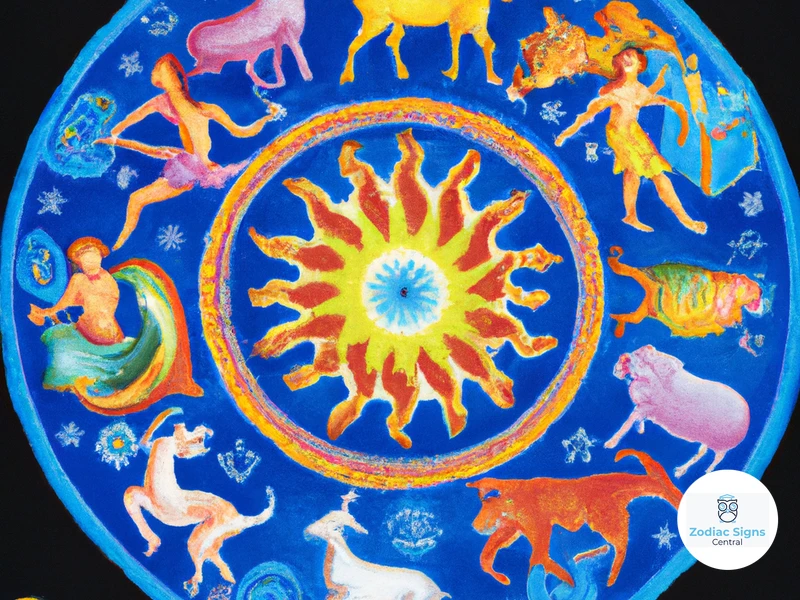
Astrology in Western culture has a rich and complex history that spans over centuries. One of the earliest known records of astrology can be traced back to ancient Greece, where it was seen as a vital part of society. Greek philosophers, such as Plato and Aristotle, believed that the celestial bodies influenced human behavior and destiny. Astrology continued to flourish in medieval Europe, where it became intertwined with religious beliefs and played a significant role in daily life. Astrological charts and horoscopes were consulted for guidance in various aspects of life, including agriculture, medicine, and even politics. In modern Western astrology, the focus has shifted towards self-discovery and personal growth. People turn to astrology to gain insight into their personality traits, relationships, and life purpose. The influence of astrology in Western culture can be seen in the popularity of yearly horoscopes, the exploration of the inner world through astrological analysis, and the understanding of how planetary alignments play a role in goal manifestation.
Astrology in Ancient Greece
Astrology in Ancient Greece played a significant role in shaping the beliefs and practices of Western astrology. The Greeks believed that the position and movements of celestial bodies held great influence over human lives. In fact, astrology was considered a branch of mathematics and astronomy during this time. Greek philosophers, such as Plato and Aristotle, believed that the stars and planets were connected to the fundamental principles of life and that their positions at the time of a person’s birth could determine their personality traits and destiny.
One of the key developments in astrology during this period was the creation of the zodiac, which divided the sky into twelve equal parts, each associated with a specific constellation. This formed the basis for the twelve zodiac signs that are still used today. The Greeks were also known for their development of astrological charts, known as horoscopes, which mapped out the position of the planets at the exact moment of a person’s birth. These charts were consulted to gain insight into various aspects of life, including personality, relationships, and future events.
Astrology in Ancient Greece was not limited to individual horoscopes; it also had a broader impact on society. Astrologers were consulted by rulers and statesmen to make important decisions, such as when to go into battle or how to interpret natural disasters. The belief in astrology was so deeply ingrained in Greek culture that temples were dedicated to the gods associated with the planets, such as Apollo as the god of the sun and Hermes as the god of communication and travel.
The influence of astrology in Ancient Greece can still be seen today in Western astrological practices. The zodiac signs, horoscopes, and the belief in the influence of celestial bodies on human behavior all trace their roots back to this period. Exploring the ancient foundations of astrology can provide a deeper understanding of our own astrological beliefs and practices, and how they have evolved over time. For a more in-depth exploration of the inner world of astrology, you can read the article “Exploring the Inner World of Astrology” that delves into the psychological aspects of astrology and self-discovery.
Astrology in Medieval Europe
In medieval Europe, astrology played a significant role in shaping beliefs, society, and daily life. During this period, astrology was closely tied to religious beliefs and was considered a divine language through which God communicated with humanity. Astrological charts and horoscopes were consulted by kings, nobles, and common people alike for guidance in various aspects of life. Astrologers were highly respected and often served as advisors to rulers, providing insights on matters such as marriage alliances, warfare, and even the timing of important events. The medieval worldview was heavily influenced by astrology, with the belief that the movements and positions of celestial bodies directly influenced human behavior and events on Earth. Astrology in medieval Europe was also associated with the pursuit of alchemy, a practice intertwined with the quest for spiritual transformation and the search for the philosopher’s stone. The practice of astrology during this period involved intricate calculations based on celestial positions, and astrologers used various tools such as astrolabes and ephemerides to make predictions. Astrology in medieval Europe was deeply ingrained in the fabric of society, influencing decision-making, providing guidance, and offering a framework for understanding the world.
Modern Western Astrology
Modern Western astrology has evolved significantly over time, adapting to the changing beliefs and values of society. It is no longer solely associated with predicting future events but has become a tool for self-exploration and personal development. Individuals turn to astrology to gain insights into their personalities, relationships, and life paths. The practice of creating birth charts, also known as natal charts, has become widespread. These charts map out the positions of the planets at the time of an individual’s birth, providing a snapshot of their unique astrological makeup. Astrologers use these charts to analyze personality traits, strengths, weaknesses, and life themes. Horoscopes, which offer short astrological readings for each zodiac sign, are a popular feature in magazines, newspapers, and online platforms. They provide general insights and predictions for specific periods, such as daily, weekly, or monthly horoscopes. Modern Western astrology also incorporates the concept of astrology in popular culture, where the zodiac signs are referenced in various contexts, including movies, music, and even social media. The integration of Western astrology with psychology, known as psychological astrology, explores the psychological patterns and motivations behind astrological interpretations. It focuses on personal growth, understanding the self, and enhancing relationships. Modern Western astrology caters to the individual’s desire for self-understanding, guidance, and empowerment. It offers a way to explore the inner world through astrological analysis, understand the role of planets in goal manifestation, and provides valuable insights into various aspects of life. [Link to Exploring Inner World Astrology]
Astrology in Eastern Cultures
Astrology in Eastern cultures has a vibrant and diverse landscape, with different countries having their unique astrological traditions. Vedic astrology in India, also known as Jyotish, is deeply rooted in Hinduism and has been practiced for thousands of years. It focuses on the positioning of the planets at the time of a person’s birth and their impact on various aspects of life. Chinese astrology, on the other hand, is based on the lunar calendar and emphasizes the zodiac signs and animal symbolism. It is widely popular in China and other Asian countries. Japanese astrology, influenced by both Chinese and Western astrology, has its own distinct system called Kanshi. It combines elements of the Chinese zodiac with the interpretation of heavenly stems and earthly branches. These Eastern astrological practices provide unique perspectives on personality traits, compatibility, and predictions for the future. Whether it’s exploring the inner world through astrology or understanding important astrological events and yearly horoscopes, Eastern cultures offer a fascinating approach to celestial interpretation.
Vedic Astrology in India
Vedic Astrology, also known as Jyotish, is a significant aspect of Indian culture and has its roots deeply embedded in ancient texts called the Vedas. Vedic Astrology is believed to be one of the oldest and most accurate astrological systems in the world. It is a comprehensive system that takes into account the position of celestial bodies, including the planets, at the time of a person’s birth.
In Vedic Astrology, the birth chart, or horoscope, is considered a blueprint of an individual’s life. It is used to gain insights into various aspects of life, including career, relationships, health, and spirituality. The placement of planets and their interactions in the birth chart are believed to influence a person’s character, tendencies, and destiny.
Vedic Astrology also encompasses a branch called “Muhurta,” which focuses on selecting auspicious moments for important events such as weddings, starting a business, or undertaking a journey. It is believed that aligning events with favorable planetary alignments can bring about positive outcomes.
Astrologers who practice Vedic Astrology in India are highly respected and sought after. They undergo years of study and training to interpret birth charts accurately and provide guidance and predictions. Vedic Astrology continues to be an integral part of daily life in India, with individuals and families consulting astrologers for important life decisions and understanding their life path.
It is important to note that Vedic Astrology differs in certain aspects from Western astrology. The Vedic system takes into account the sidereal zodiac, which considers the actual positions of the stars in the sky, as opposed to the tropical zodiac used in Western astrology. Additionally, Vedic Astrology places significant emphasis on the concept of karma and the belief that our actions in past lives influence our present circumstances.
Vedic Astrology in India is a fascinating and complex system that reflects the rich cultural heritage of the country. It serves as a guide for individuals seeking self-understanding, decision-making, and spiritual growth. If you’re interested in delving deeper into the world of astrology and exploring the inner world of your own birth chart, you may find it worthwhile to explore the concept of Vedic Astrology.
Link: exploring the inner world through astrological analysis.
Chinese Astrology
Chinese Astrology, also known as Shengxiao or the Chinese zodiac, is deeply rooted in Chinese culture and has a history that dates back thousands of years. It is based on a 12-year cycle, with each year represented by a specific animal sign. These animal signs are the Rat, Ox, Tiger, Rabbit, Dragon, Snake, Horse, Sheep, Monkey, Rooster, Dog, and Pig. Chinese astrology is not only concerned with the year of birth but also takes into account the month, day, and hour of birth to determine a person’s complete astrological profile.
Each animal sign is associated with certain attributes and characteristics that are believed to influence people’s personalities, relationships, and even destiny. For example, those born in the Year of the Rat are believed to be resourceful, ambitious, and quick-witted. The Year of the Dragon is associated with power, success, and good fortune. These animal signs are also used to determine compatibility between individuals in relationships or marriages.
In addition to the 12 animal signs, Chinese astrology also incorporates the five elements: Wood, Fire, Earth, Metal, and Water. Each element is associated with certain traits and further refines the interpretation of a person’s astrological profile. The combination of animal signs and elements creates a complex system that is used to make predictions about various aspects of a person’s life, such as career, health, and love.
Chinese astrology is deeply ingrained in Chinese culture and is widely embraced and consulted by people in China and across the world. It plays a significant role in decision-making, such as choosing auspicious dates for important events like weddings, business ventures, and even home renovations. Chinese New Year, based on the lunar calendar, is a time when Chinese astrology takes center stage, with predictions and forecasts for the year ahead being eagerly anticipated.
The Chinese zodiac and its astrological principles have also influenced other aspects of Chinese culture, such as art, literature, and even popular culture. Many people proudly identify with their Chinese zodiac sign, and it has become a common point of reference and conversation.
Chinese astrology is a complex and integral part of Chinese culture. It provides insights into personality traits, compatibility, and predictions for various aspects of life. Whether consulting for personal guidance or simply for the enjoyment of understanding oneself and others, Chinese astrology continues to captivate and intrigue individuals seeking a deeper understanding of themselves and the world around them.
Japanese Astrology
Japanese astrology, known as “Onmyodo,” has a unique and fascinating approach to interpreting celestial influences. Rooted in ancient Chinese astrology, Onmyodo developed its own distinct system during the Heian period in Japan. One of the central figures in Japanese astrology is the “Onmyoji,” a practitioner who combines astrology, divination, and spiritual practices. Onmyoji utilize various tools and techniques, including star charts, lunar calendars, and the study of energy flow, to make predictions and offer guidance. One prominent aspect of Japanese astrology is the belief in the Twelve Earthly Branches, which are twelve animal symbols corresponding to each year. These branches, similar to the Chinese zodiac, are believed to have a significant influence on an individual’s personality traits and destiny. Additionally, Japanese astrology incorporates the Five Elements (wood, fire, earth, metal, water), which further shape a person’s character and fate. Astrological events that hold importance in Japanese astrology include the celebration of the “Doyo no Ushi no Hi,” a day believed to bring fortune and luck, and the “Setsubun” festival, which marks the changing of seasons and involves rituals to ward off evil spirits. Japanese astrology offers a holistic perspective on the individual’s interaction with the celestial and natural world, providing insights into personal strengths, weaknesses, and potential paths for self-improvement and harmony with the universe.
Indigenous Astrological Practices
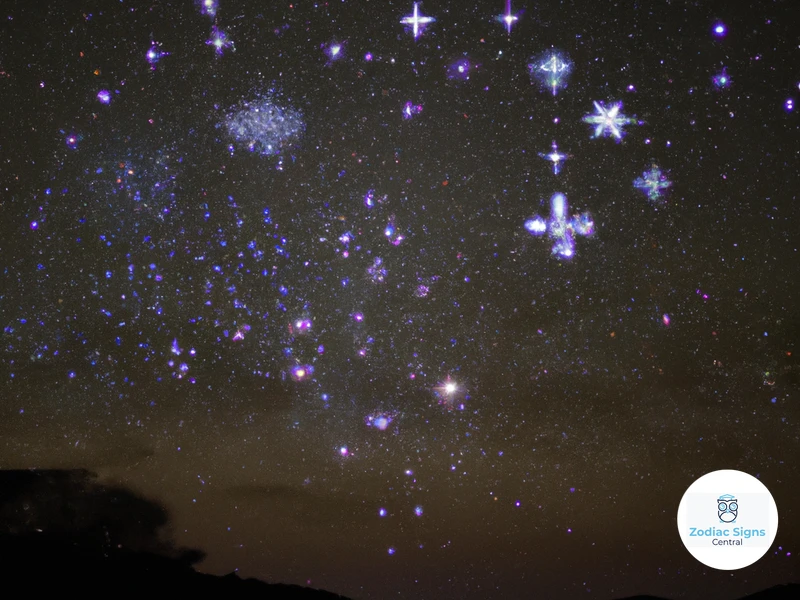
Indigenous astrological practices have deep roots in various cultures across the world. Mesoamerican astrology, for example, developed in ancient civilizations such as the Mayans and Aztecs. They believed that celestial bodies held great significance in understanding human existence and the passage of time. Mesoamerican astrologers used complex calendars and astrology charts to interpret celestial events and predict important dates for rituals, agriculture, and governance. Similarly, African astrology has its unique traditions deeply embedded in cultural practices. African astrologers place emphasis on ancestral connections and the spirit world, using divination methods such as throwing bones or interpreting natural phenomena. Native American astrology, on the other hand, is closely tied to the connection between humans and nature. Tribes like the Lakota and Navajo have intricate astrological systems based on the cycles of the moon, seasons, and animal totems. Indigenous astrological practices offer a rich tapestry of wisdom and are a reminder of the diverse ways in which humanity has sought to understand and interact with the cosmos throughout history.
Mesoamerican Astrology
Mesoamerican Astrology, originating from the ancient civilizations of the Mayans and Aztecs, offers a unique perspective on the celestial influence on human lives. The Mesoamericans believed that the movements of celestial bodies directly impacted the fate and destiny of individuals. Central to Mesoamerican Astrology is the sacred calendar, known as the Tzolk’in, which consists of 260 days divided into 20 periods of 13 days each. Each day is associated with a specific deity and carries its own symbolic meaning. The calendar served as a guide for important events, rituals, and divination practices. Mesoamerican astrologers also studied the movements of celestial bodies like the sun, moon, and planets, observing their alignments to interpret celestial messages and predict future events. This intricate astrological system played a significant role in the lives of ancient Mesoamericans, influencing their decisions regarding agriculture, warfare, and even personal matters. Today, Mesoamerican Astrology continues to be practiced and celebrated by indigenous communities in Mexico and parts of Central America, carrying on the rich cultural heritage and wisdom of their ancestors. By exploring Mesoamerican Astrology, we gain insight into how ancient civilizations perceived and connected with the cosmos, providing a different lens through which to understand the mysteries of the universe.
African Astrology
African Astrology refers to the astrological practices and beliefs that have been developed and passed down through generations across the African continent. Unlike Western astrology, which is based on the twelve zodiac signs, African astrology typically revolves around different systems that vary by region and ethnic group. One popular example is the system of the Yoruba people of Nigeria, which is based on the four elements of nature: earth, water, air, and fire. Each element corresponds to specific personality traits and characteristics. In some African astrological systems, animals also play a significant role. For instance, the Dogon people of Mali believe that individuals are linked to particular animal spirits based on their birth dates. These animal spirits influence their personality and life path. African astrology often emphasizes the interconnectedness of all things and places a strong emphasis on ancestral guidance and spirituality. It serves as a tool for self-discovery, understanding one’s purpose, and seeking guidance in decision-making processes. The deep-rooted cultural beliefs and traditions surrounding African astrology continue to be practiced and celebrated today, providing a unique perspective on the role of astrology in African society.
Native American Astrology
Native American Astrology is deeply rooted in the spiritual beliefs and traditions of various indigenous tribes across North America. Unlike the astrological systems found in Western cultures, Native American astrology is not based on the alignment of celestial bodies but rather on the connection between humans and nature. Native Americans believe that each individual is assigned an animal totem or spirit guide based on their birth date. These animal totems represent specific qualities and characteristics that are believed to influence one’s personality and life path. For example, those born under the sign of the Bear are seen as strong leaders and protectors, while those born under the sign of the Eagle are associated with vision and spiritual guidance. Native American astrology also takes into account the cycles of the moon and the seasons, as well as the natural elements such as water, fire, earth, and air. This astrological system provides guidance and insight into personal strengths, weaknesses, and life purpose. Native Americans have long relied on their astrological beliefs to make important decisions, seek spiritual guidance, and gain a deeper understanding of themselves and their place in the world.
Source: important dates and astrological events in yearly horoscope
Regional Variations in Astrology
Astrology exhibits fascinating regional variations across different parts of the world. In the Middle East, astrological practices have deep roots, dating back to ancient Mesopotamia. Astrologers in this region focused on celestial omens and their impact on political and societal events. South America boasts its own unique astrological traditions, such as the Andean astrology of the Inca civilization. This form of astrology emphasized the connection between humans, nature, and the cosmos. In Southeast Asia, astrology plays a significant role in cultural practices, particularly in countries like India, Thailand, and Indonesia. Indian astrology, known as Vedic astrology, is deeply ingrained in daily life, with horoscope matching being crucial for determining compatibility in marriages. Thai and Indonesian astrology incorporate elements of Hindu and Islamic traditions, respectively, resulting in distinctive astrological systems. Exploring these regional variations in astrology provides a remarkable insight into the diverse ways in which cultures perceive and interact with the celestial forces that govern our lives.
Astrology in the Middle East
Astrology in the Middle East has a rich and diverse history, deeply intertwined with various cultural and religious practices. One of the oldest known astrological traditions in the region is Mesopotamian astrology, which dates back to ancient Babylonia. The Babylonians were skilled astronomers and believed that the positions and movements of celestial bodies held significant influence over earthly matters. They developed intricate systems and techniques for interpreting celestial events and used astrology for making important decisions, such as predicting the outcomes of battles or determining the fate of a ruler. As Islamic civilization flourished in the Middle East, astrology continued to thrive, albeit with some modifications. Islamic scholars, such as Abu Ma’shar and Al-Kindi, incorporated astrological principles into their studies of astronomy and mathematics. Astrology played a role in medicine as well, with physicians using astrological charts to diagnose and prescribe treatments. Throughout history, astrology remained deeply rooted in Middle Eastern culture, with various regions developing their own unique astrological practices. For example, Iranian astrology, known as Persian astrology, combines elements of ancient Babylonian astrology with Zoroastrian beliefs. It emphasizes the use of planets and stars in predicting future events and personal characteristics. Today, astrology in the Middle East continues to evolve and adapt, blending traditional practices with modern interpretations. Its influence can be seen in cultural celebrations, like the Persian New Year, where astrological charts are consulted to gain insight into the year ahead. The Middle East’s rich astrological heritage remains an integral part of the region’s cultural fabric, shaping beliefs and guiding decisions to this day.
Astrology in South America
Astrology in South America has a diverse and fascinating history, deeply rooted in the indigenous cultures of the region. The ancient civilizations of the Aztecs, Mayans, and Incas all had their unique astrological beliefs and practices. In Aztec culture, for example, astrology played a crucial role in religious ceremonies and political decision-making. They observed celestial movements and believed that they directly influenced human affairs. The Mayans, known for their advanced knowledge of astronomy, developed a sophisticated astrological system based on the movements of celestial bodies. They believed that these planetary alignments held great significance for events in their daily lives. The Incas, on the other hand, worshiped the Sun as their primary deity and placed great emphasis on the Sun’s position in their astrological interpretations. Today, astrology continues to be an integral part of South American culture, especially among indigenous communities who have preserved their rich astrological traditions.
Astrology in Southeast Asia
Astrology in Southeast Asia has a rich and diverse history, with each country in the region having its own unique astrological practices. In Thailand, astrology is deeply rooted in Buddhist beliefs and is known as “Jahtakam.” Jahtakam is commonly used to determine auspicious dates for important events such as weddings or house blessings. In Indonesia, astrology is heavily influenced by Hindu and Islamic traditions. Javanese astrology, known as “Bati,” combines elements of astrology, numerology, and palmistry to provide guidance and predictions for individuals. In Malaysia, astrology known as “Ramal” is practiced alongside traditional healing methods. It involves divination through the interpretation of markings, symbols, and patterns. In Vietnam, astrology was traditionally used by the royal court to determine the fate and fortune of the country. Astrologists would analyze the positioning of celestial bodies to make predictions and decisions. Astrology in Southeast Asia reflects the cultural and religious diversity of the region, and its practices continue to be an integral part of people’s lives, guiding them in making important life decisions and seeking insight into their future.
Modern Adaptations and Fusions

Modern adaptations and fusions in astrology have led to a fresh wave of interest and exploration in this ancient practice. One notable modern adaptation is New Age astrology, which combines elements of traditional astrology with metaphysical and spiritual principles. New Age astrology emphasizes personal growth, self-awareness, and the alignment of one’s energy with the universe. It often incorporates concepts such as chakras, energy healing, and the law of attraction. Another area where astrology has found a place is in popular culture. From books and movies to television shows and social media, astrology has become a topic of fascination and intrigue. People are drawn to horoscopes, zodiac signs, and the idea of using astrology to understand themselves and their relationships. Additionally, astrology has also influenced other forms of creative expression, such as fashion and art. Fashion designers and artists often draw inspiration from astrological symbols, celestial motifs, and planetary alignments to create unique and visually captivating pieces. These modern adaptations and fusions demonstrate the enduring appeal and relevance of astrology in contemporary society and its impact on various aspects of human life. [role-planets-goal-manifestation-astrology]
New Age Astrology
New Age astrology is a modern adaptation that emerged in the late 20th century and continues to gain popularity today. It is characterized by a more holistic and spiritual approach to astrology, incorporating elements of psychology, metaphysics, and personal development. Unlike traditional astrology, which primarily focuses on predicting future events, New Age astrology emphasizes self-reflection, inner growth, and the exploration of one’s spiritual path. Practitioners of New Age astrology often seek to align themselves with the natural rhythms of the universe and use astrology as a tool for self-discovery and transformation. This branch of astrology believes in the interconnectedness of all things and the power of individual intention in manifesting desired outcomes. New Age astrology places a strong emphasis on the individual’s role in co-creating their reality and achieving personal goals. Understanding the role of planets in goal manifestation becomes essential in this approach, as practitioners believe that celestial alignments can influence and support their intentions and desires. With its focus on consciousness, personal growth, and the power of intention, New Age astrology offers a unique perspective on the ancient practice of astrology.
Astrology in Popular Culture
Astrology has made its mark in popular culture, permeating various forms of media and entertainment. Films, television shows, and books often incorporate astrological themes, characters, or references. For example, the popular Harry Potter series by J.K. Rowling features astrology prominently, with characters such as Sybill Trelawney who teaches Divination, a subject that includes astrology and prediction. Astrology is also frequently mentioned in music, with lyrics referencing zodiac signs or astrological compatibility. Madonna’s song “Like a Virgin” includes the lyric “Gonna give you all my love, boy. My fear is fading fast” which is a reference to the astrological concept of the planet Venus representing love and harmony. In addition to literature and music, astrology has also infiltrated online platforms and social media. Many people now turn to astrology for guidance and self-reflection, following popular astrologers on platforms like Instagram and TikTok. The influence of astrology in popular culture extends beyond entertainment; it has found its way into the fashion industry as well. Fashion designers often incorporate astrological elements, such as zodiac symbols or celestial patterns, into their collections. Celebrities and influencers are also known to showcase their astrological signs and beliefs, further fueling the fascination with astrology in popular culture. The role of astrology in popular culture reflects society’s continuing interest in the mystical and the desire to understand oneself and the world around us through the lens of the stars and planets.
Astrological Influences on Fashion and Art
Astrology has had a profound influence on the worlds of fashion and art. The celestial bodies and their positions in the zodiac are often reflected in clothing designs, jewelry, and accessories. Fashion designers draw inspiration from astrology, incorporating zodiac signs, constellations, and celestial motifs into their collections. Astrology-themed garments and accessories have become popular, allowing individuals to showcase their astrological sign or express their affinity for the stars. Artistic representations of astrology can be found in various forms, including paintings, sculptures, and digital art. Artists explore the mystical and symbolic elements of astrology, creating captivating visuals that capture the imagination. The planets, zodiac signs, and celestial alignment serve as a muse for artists, providing them with a rich tapestry of symbolism and meaning to explore. These art forms not only bring the beauty of astrology to life but also allow individuals to connect with and express their fascination with the cosmos. Whether it’s a celestial-inspired painting hanging on a gallery wall or a zodiac-themed necklace adorning someone’s neck, the influence of astrology on fashion and art is undeniably captivating and thought-provoking. To further explore the role of planets in goal manifestation and how it intersects with astrology, refer to this resource.
Conclusion
In conclusion, the study of cultural variations in astrological beliefs and practices reveals the diverse and multifaceted nature of astrology across different regions and time periods. From ancient Greece to modern Western society, astrology has been a constant presence in human history, shaping beliefs, influencing decision-making, and providing individuals with a sense of guidance and understanding. The rich traditions of Vedic astrology in India, Chinese astrology, and Japanese astrology showcase the unique interpretations and applications of astrological principles in Eastern cultures. Indigenous astrological practices, such as Mesoamerican astrology, African astrology, and Native American astrology, reflect the deep connection between celestial observations and the natural world. Regional variations in astrology, as seen in the Middle East, South America, and Southeast Asia, highlight the ways in which cultural and societal factors influence astrological beliefs and practices. Moreover, the modern adaptations and fusions of astrology, such as New Age astrology and its impact on popular culture, fashion, and art, demonstrate the continuing relevance and influence of astrology in contemporary society. Overall, the cultural variations in astrological beliefs and practices provide a fascinating insight into the diverse ways in which humanity seeks to understand the cosmos and its influence on our lives. Whether one engages with astrology as a personal belief system, an academic study, or a source of entertainment, its enduring presence and adaptability across cultures is a testament to its enduring appeal and relevance.
Frequently Asked Questions

What is the history of astrology in ancient Greece?
Ancient Greece is widely regarded as the birthplace of Western astrology. It was during this time that philosophers like Plato and Aristotle believed in the influence of celestial bodies on human behavior and destiny. Astrology played a vital role in Greek society, influencing various aspects of life.
How did astrology evolve in medieval Europe?
Astrology continued to thrive in medieval Europe, where it became deeply intertwined with religious beliefs. It was consulted for guidance in areas like agriculture, medicine, and politics. Astrological charts and horoscopes played a significant role in people’s daily lives during this period.
What is the focus of modern Western astrology?
Modern Western astrology has shifted towards self-discovery and personal growth. Many people turn to astrology to gain insight into their personality traits, relationships, and life purpose. It is seen as a tool for personal reflection and understanding.
What is Vedic astrology and its significance in India?
Vedic astrology is an ancient Indian astrological system that has been practiced for thousands of years. It holds great significance in Indian culture, where it is used to guide important life decisions, such as marriage, career choices, and even naming newborns.
How does Chinese astrology differ from Western astrology?
Chinese astrology follows a different system compared to Western astrology. It is based on a 12-year lunar cycle and assigns animal zodiac signs to individuals based on their birth year. Chinese astrology also places a strong emphasis on the five elements – wood, fire, earth, metal, and water.
What are some key features of Japanese astrology?
Japanese astrology, known as ‘Eto’ or ‘Junishi,’ assigns an animal zodiac sign to each year and day. These zodiac signs are based on a 12-year cycle, similar to Chinese astrology. Japanese astrology also incorporates the concept of “blood types,” which are believed to influence personality traits.
What are the characteristics of Mesoamerican astrology?
Mesoamerican astrology, practiced by ancient civilizations like the Maya and Aztecs, had a strong connection to celestial bodies. It focused on the movements of the sun, moon, and planets to predict events, determine propitious dates, and analyze personality traits. Mesoamerican astrology also incorporated complex calendar systems.
What are the key beliefs in African astrology?
African astrology varies across different regions, but there are common beliefs. It often emphasizes the connection between humans and nature, with animals playing a significant role in symbolic interpretations. African astrologers also take into account the positioning of celestial bodies and the elements of earth, air, fire, and water.
What are the main principles of Native American astrology?
Native American astrology is deeply tied to nature and the spiritual beliefs of indigenous tribes. It focuses on the interconnectedness of all living beings and places a strong emphasis on animal totems and their symbolism. The time of birth and the positioning of stars also play a crucial role in Native American astrological interpretations.
How is astrology practiced in the Middle East?
Astrology in the Middle East has roots in ancient Babylonian and Persian cultures. Traditional Middle Eastern astrology, also known as Arabian astrology, places a strong emphasis on the position of the planets at the time of birth. It is used to interpret personality traits, predict events, and guide decision making.
References
Frequently Asked Questions

What is the significance of astrology in different cultures?
Astrology holds different significance in different cultures, often playing a vital role in shaping beliefs, traditions, and everyday decisions. It offers insights into personal and collective identities, relationships, and life events.
How does ancient Greek astrology differ from modern Western astrology?
Ancient Greek astrology focused heavily on the movements and alignments of celestial bodies, primarily for predicting events and individual characteristics. Modern Western astrology, while still based on these fundamentals, also considers psychological factors and personal growth.
What makes Vedic astrology unique in India?
Vedic astrology, also known as Jyotish, is deeply rooted in Hindu philosophy. It emphasizes the concept of karma and aims at providing individuals with guidance on their life’s purpose, spiritual growth, and overcoming challenges.
What are the key characteristics of Chinese astrology?
Chinese astrology is based on a twelve-year cycle, with each year represented by an animal sign. It primarily focuses on personality traits, compatibility analysis, and predicting future events based on the celestial alignment at the time of birth.
What distinguishes Japanese astrology from other Eastern astrological practices?
Japanese astrology, known as Tenmon, combines influences from Chinese and Buddhist astrology. It places significant emphasis on annual predictions, cultural events, and personal fortunes based on the twelve animal signs and the positioning of planets.
What are the main features of Mesoamerican astrology?
Mesoamerican astrology, practiced by ancient civilizations such as the Maya and Aztec, revolves around complex calendars and divination systems. It involves the interpretation of celestial events, such as the movements of the sun, moon, and planets, to predict agricultural cycles, governance, and individual destinies.
How does African astrology differ from other indigenous astrological practices?
African astrology varies widely across different regions and ethnic groups. It often combines elements of nature, animal symbolism, and ancestor worship. Astrologers interpret celestial events and planetary alignments to determine life paths, relationships, and spiritual connections.
What are the key factors in Middle Eastern astrology?
Middle Eastern astrology draws heavily from ancient Babylonian and Persian practices. It emphasizes the influence of planetary movements on human destinies, with a particular focus on political events, social structures, and the spiritual well-being of individuals and communities.
How does South American astrology differ from Western astrological traditions?
South American astrology incorporates indigenous beliefs and practices that have been passed down through generations. It often combines celestial observations with the elements of nature and animal spirits to offer guidance on personal relationships, health, and community dynamics.
How has astrology influenced modern fashion and art?
Astrology has become a source of inspiration for modern fashion designers and artists. From zodiac-themed clothing collections to celestial motifs in paintings, astrology adds a touch of mysticism, personal expression, and a connection to cosmic forces in contemporary creative expressions.
References
- List of astrological traditions, types, and systems
- How do cultural differences impact astrological practices …

